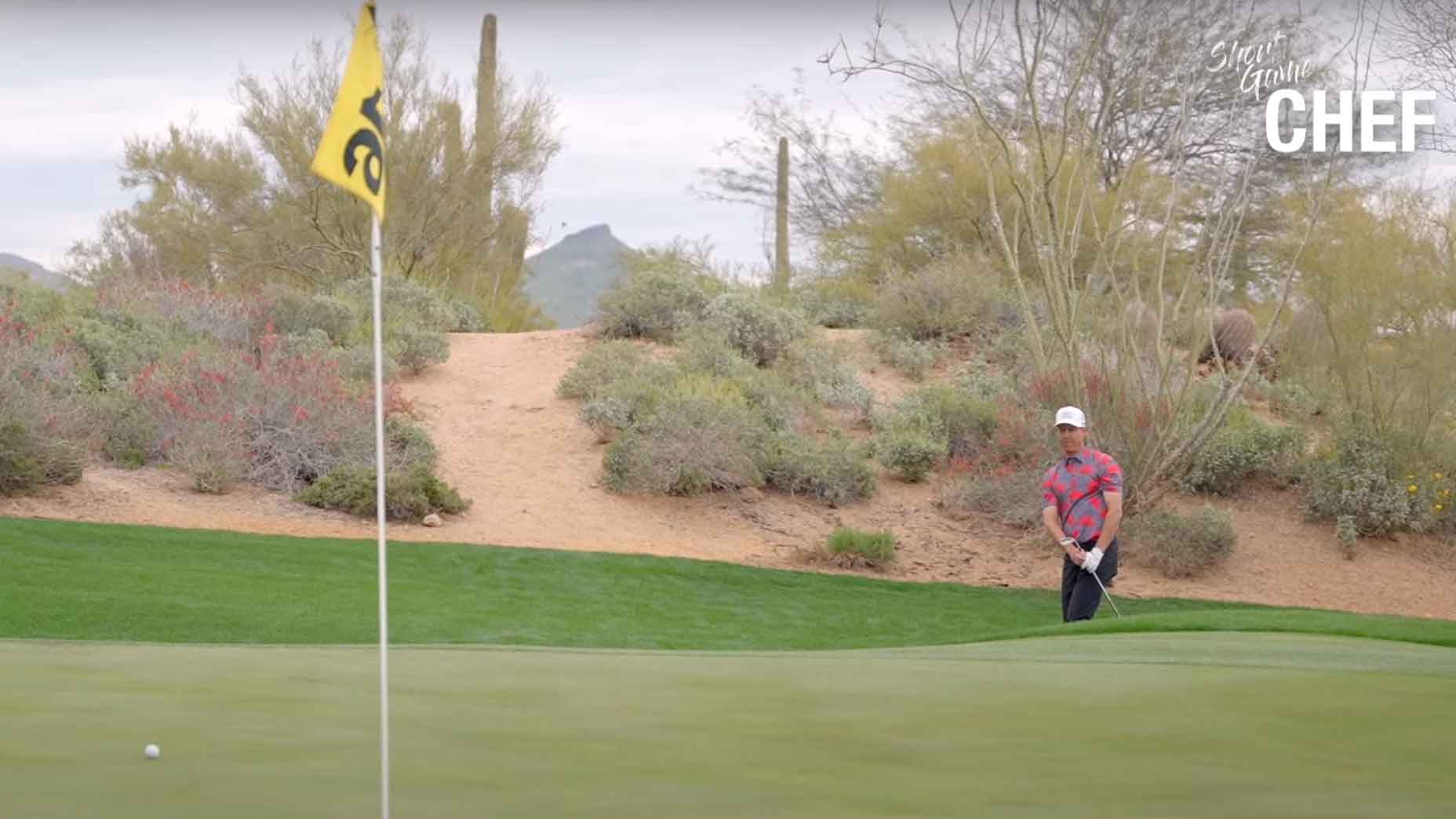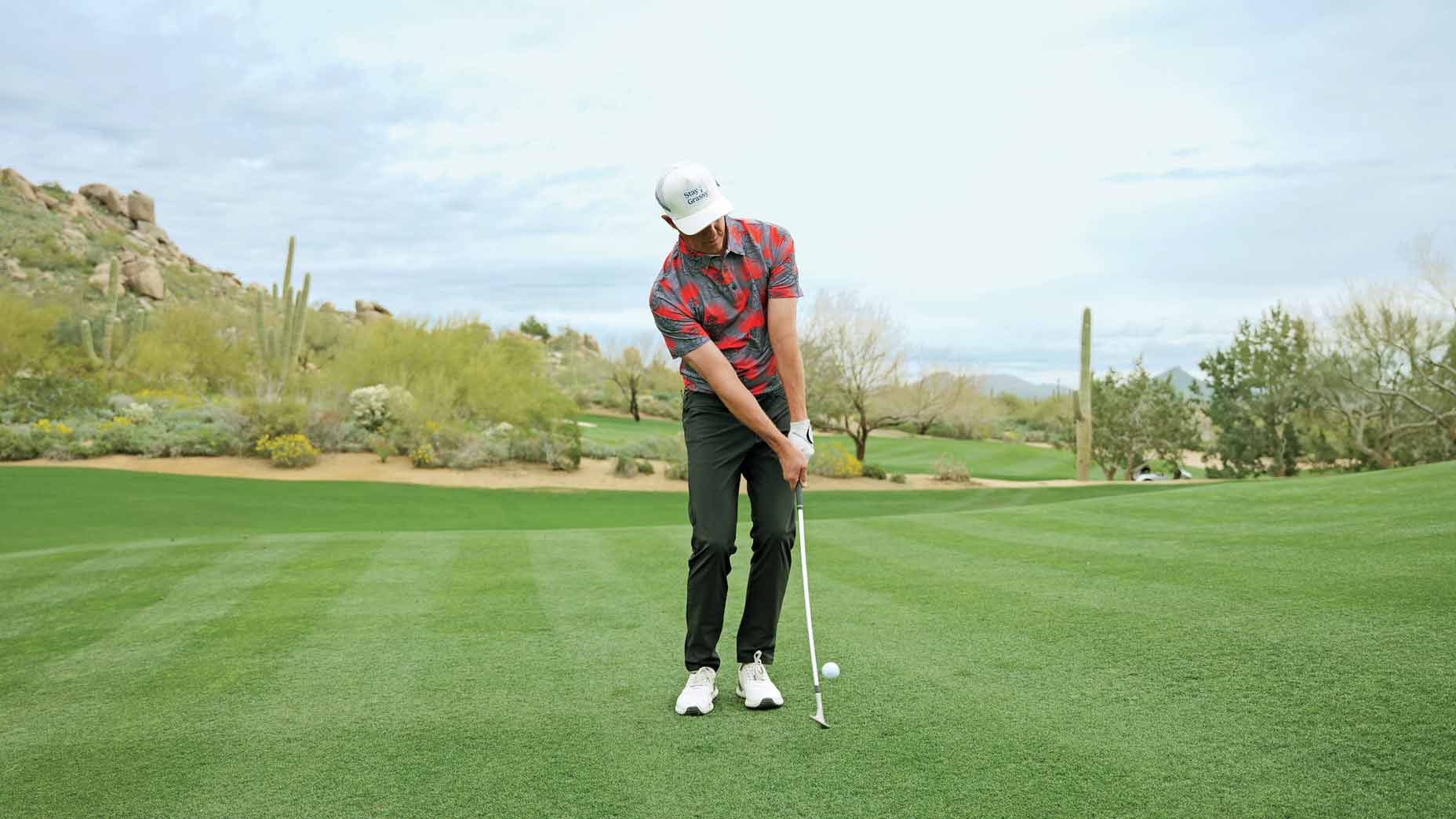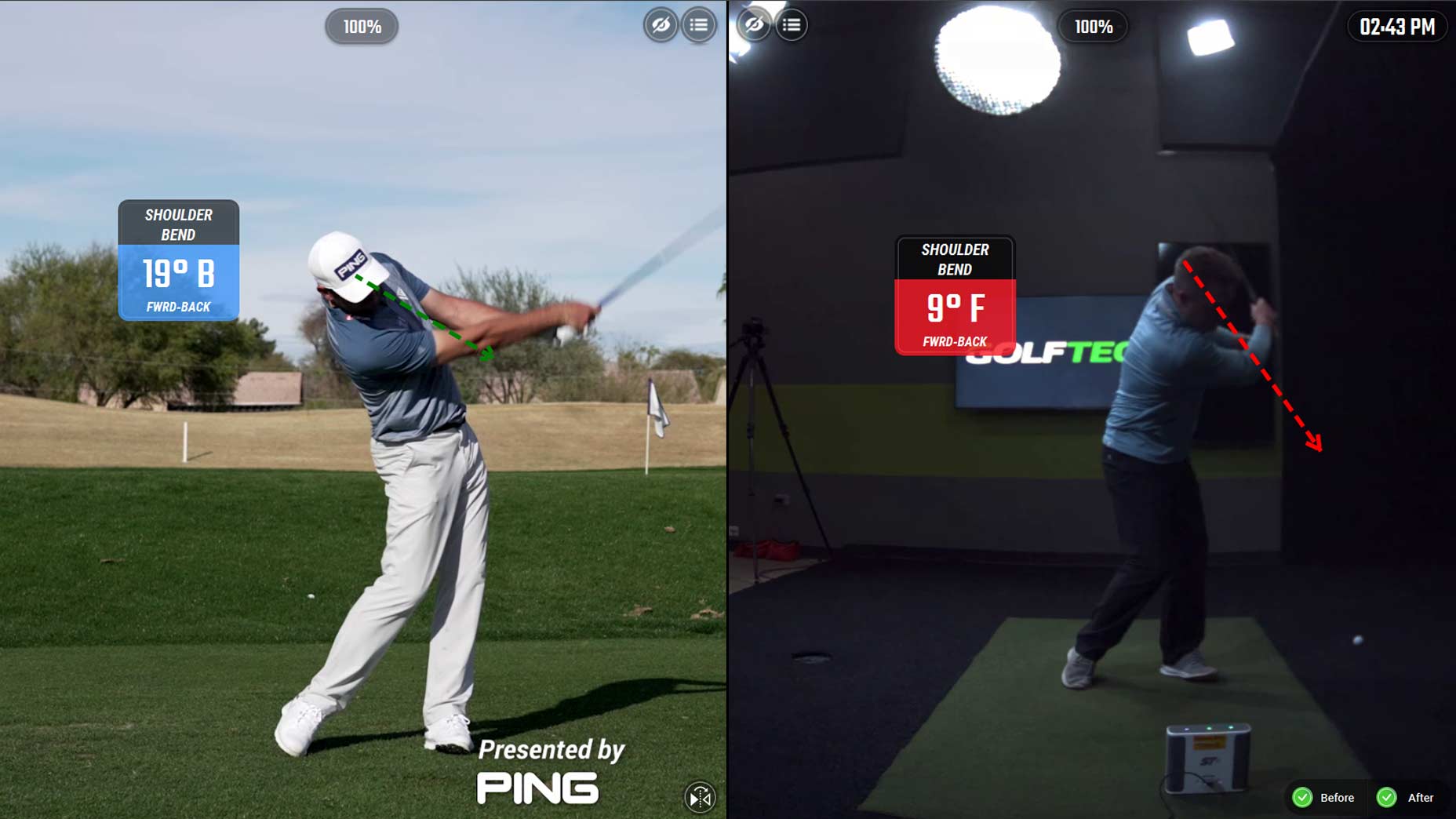Welcome to Shaving Strokes, a new GOLF.com series in which we’re sharing improvements, learnings and takeaways from amateur golfers just like you — including some of the speed bumps and challenges they faced along the way.
With the holidays here, there’s no better time to gift your favorite golfer a Short Game Chef membership. Take the next step toward mastering your game by using the code GOLF15 for 15% off! CLICK HERE!
On a soggy morning just outside Seattle, I found myself standing on a tee box of a par-3 hole at Tacoma Country & Golf Club with Parker McLachlin, aka the Short Game Chef, who was spending the day with me to give me some lessons.
While McLachlin is best-known for his prowess around the greens — seriously, you should see the saucy shots this GOLF Teacher to Watch hits with a wedge in his hands — on this day, he and I would be playing a few holes against one another.
Never one to turn down a challenge, even if it is against a one-time Tour winner who currently teaches other pros his secret recipe in the short game, I was up for the task… or so I thought.
As the Chef and I analyzed the shot in front of us, I instantly knew what I definitely wanted to avoid: The water on the left and the bunkers behind the green.
Confident in my own ability, I didn’t just think a closest-to-the-pin challenge was enough. So instead, I decided to bet McLachlin a cool $20, believing I truly had the chops to stick my shot within a few feet of the hole.
Then reality set in.
McLachlin, ever the gentleman, allowed me to hit first. Of course, this was all part of his master plan to psyche me out, as this put the pressure on me to perform and gave him the chance to observe my result.
Short game myths that are costing you strokes, according to an expertBy: Nick Dimengo
It’s similar to a football team playing defense first in overtime, giving them the opportunity to determine how aggressive or how conservative they need to be once it’s their turn with the ball.
Turns out McLachlin wasn’t being polite, he was just being smart.
Another element of surprise was that we both grabbed our 8-irons on this par-3 from about 150 yards.
Naturally, I second-guessed myself and nearly reconsidered the decision — after all, was I really going to use the same club as a pro?
“Wait, you have your 8-iron, too?” I asked. “Maybe I should club up to a 7 to make sure I don’t leave it short.”
“Or maybe it’s just me messing with you,” McLachlin slyly quipped.
OK, now I was officially in my own head, beginning to doubt myself before even addressing the ball. Not really a good place to be — especially with $20 on the line.
I took a few practice swings and felt good; it was go time!
As the video above shows, I completely chunked my shot, sending it into one of the two places I knew I definitely wanted to avoid; the water.
With absolutely no pressure on him, McLachlin confidently took his shot next, landing it safely on the green and leaving it about 18 feet from the pin.
Lesson learned — never bet against a Tour pro who makes a legitimate living playing golf.
But as an aside, when the cameras were off and there wasn’t any pressure, I did decide to hit another tee shot using my 8-iron again. You already know what happens next: I stuck it on the green, leaving it about 18 feet from the pin.
So, technically, I matched McLachlin’s shot… it just technically didn’t count.
As we discussed a better way to play this par-3 hole, McLachlin provided some tips to help me perform my best, which you can check out below.
3 tips to better navigate par-3s, per Parker McLachlin
I’m currently a mid-handicapper, so McLachlin reminds me that mastering par-3s like this is pivotal on my quest to shave more strokes and break 80 for the first time.
“There’s a good chance that, if you don’t hit the right shot here, you’re making double [bogey] really quick,” he tells me.
While a par-3 can be fun because they’re shorter holes that allow players to be aggressive, you must have a game plan — so McLachlin talked me through three things to think about prior to hitting your shot.
1. Choose a club that carries any hazards (in this case the water)
Prior to hitting my shot, I told McLachlin that I can hit my 8-iron about 160 yards when I hit it flush — sadly, that’s not what I did on my actual shot, though.
Knowing that I needed to be nearly perfect in order to land the ball on the green, he told me to always choose a club that can carry any water or hazards before anything else.
“I’d say the first order of business is choosing a club that gets you past the water,” he says. “If it’s 150 yards to the middle of the green, that means it’ll be 140 to basically cover the water.
“So if you’ve got a club [in your hand] that can cover 150-160 yards, then I’d say that’s your right club.”
Unfortunately, while I had the right club, McLachlin didn’t account for my chunked shot — thus the result landing in the water.
2. Make an aggressive swing
Part of choosing the right club means staying aggressive with this par-3 shot, and avoiding any fear of going long or short. McLachlin reminds me of that, saying it’s important to avoid being tentative.
“If you go to a 7-iron [in this case], now you’re bringing in the back bunker, and you’re playing for a really bad mishit,” he says.
“I don’t want you to do that. I still want you to swing free and aggressive, and avoid being tentative through this shot.”
3. Understand your miss
This is actually one of my favorite tips on par-3 holes — because most amateur golfers have tendencies when they do miss the green, either pushing the ball right or hooking it left.
If you understand what you typically do in these situations, you can use it to your advantage, according to McLachlin.
“If your miss is normally left, then make sure it’s long left since you have some grass back there,” he says. “But if your miss is a short right, it shouldn’t be too bad [on this specific hole].”
After giving his tips, the final thing McLachlin reminds me of prior to hitting the shot turned out to be the most important — I just didn’t execute on it.
“We’ve got to make sure that you make good contact with this, just to make sure you get this thing over the water and somewhere on green grass,” he said.
Should you be steep or shallow on your pitch shots? The Short Game Chef explainsBy: Parker McLachlin, GOLF Teacher to Watch
Sadly, I didn’t make the contact I needed to, resulting in the chunked shot that sent my ball into the water. It was disappointing (and embarrassing), but it was a good reminder of how hard golf can be.
Still, thanks to the lesson from McLachlin, I now have a blueprint for playing par-3s moving forward. Once I confidently choose my club, stay aggressive, and understand my shot tendencies, I just need to make sure the contact is there in order to hit more greens in regulation.
So maybe next time I’ll go double or nothing with the Short Game Chef and win some money back. Knowing some of his secrets will surely come in handy.
Don’t forget to use GOLF15 for 15% off a Short Game Chef membership! Click here to join.











